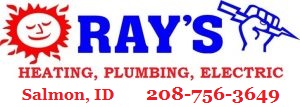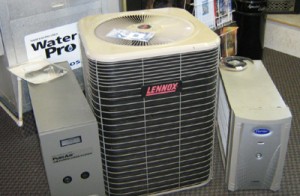How Geothermal Works
Your own backyard has the potential to be an energy source for heating and cooling comfort. Outdoor air temperatures fluctuate throughout the year with the changing seasons. In contrast, ground temperatures about four to six feet below the Earth’s surface remain relatively moderate and constant all year. That’s because the Earth absorbs 47% of all the heat energy that reaches its surface from the sun. A geothermal system circulates a water-based solution through a buried loop system to take advantage of these constant temperatures. A single piece of equipment has the ability to heat and cool your home, while providing some or all of your home’s hot water as well. Geothermal systems can save you 30% to 70% on your monthly utility bills.
Positive Cash Flow
From the day you install you new GeoComfort Geothermal System, you’ll see immediate savings. A perfect example of this is in new home construction. The table below shows that while the extra cost of installing geothermal marginally raises the mortgage payment, the energy savings more than make up the difference. So, not only do you have better comfort, higher property value, and lower energy costs, it’s like someone is paying you to live in your new home from day one!
Heating Cycle
During the heating cycle, the fluid circulates through the loop extracting heat from the ground. The heat energy is transferred to the geothermal unit. The unit compresses the extracted heat to a high temperature and delivers it to your home through a normal duct system or radiant heat system.
Cooling Cycle
For cooling, the process is simply reversed. Because the earth is much cooler than the air temperatures on a hot day, the geothermal system removes heat from the home and deposits it into the ground. The fluid is cooled by the ground temperatures and returned to the unit for cooling your home.
The Heart of the System:
Geothermal Loops
Your loop system is the heart of geothermal technology. Regardless of the option you select, it will deliver over 300% efficient comfort and savings for many years into the future. Your local geothermal dealer will help you select the proper loop system based on a site survey and by conducting a detailed energy analysis of your home. Installing a geothermal loop system is like getting a 70% discount on energy for the life of your home.
Vertical Loop: This loop is used mainly when land area is limited and in retrofit applications of existing homes. A drilling rig is used to bore holes at of depth of 150 to 200 feet. A U-shaped coil of high density pipe is inserted into the bore hole. The holes are then backfilled with a sealing solution.
Horizontal Loop: This is the most common loop used when adequate land area is available. Loop installers use excavation equipment such as chain trenchers, backhoes and track hoes to dig trenches approximately 6-8 feet deep. Trench lengths range from 100 to 300 feet, depending on the loop design and application.
Pond Loop: A pond loop is an option if a large body of water is available within approximately 200 feet of the home. A ½ acre, 8 to 10 foot deep body of water is usually adequate to support the average home. The system uses coils of pipe typically 300 to 500 feet in length. The coils are placed in and anchored at the bottom of the body of water.
Open Loop: This system can be installed if an abundant supply of high quality well water is available. A typical home will require 4 to 8 gallons of water per minute. A proper discharge area such as a river, drainage ditch, field tile, stream, pond, or lake must be present. Check your local codes for restrictions before selecting a specific discharge method.
Copyright 2008 GeoComfort, All Rights Reserved. Designed By Element Fusion & Powered By Water.

